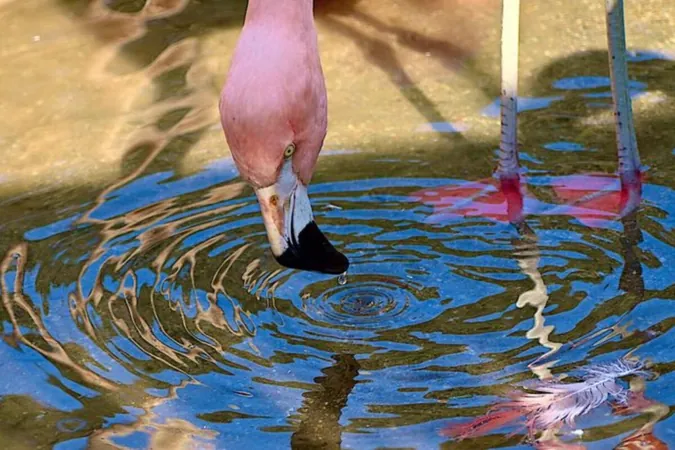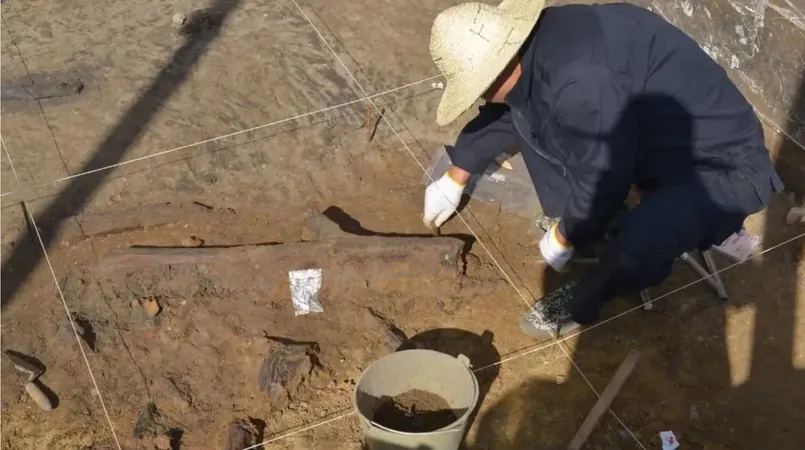
Flamingos Unleash the Power of Vortex Feeding: A Stunning New Study
2025-05-16
Author: Ming
Flamingos, known for their picturesque poses with heads submerged, are far more than just pretty birds. Dive beneath the surface, and you’ll witness their vibrant pink beauty at work—creating mini tornadoes to expertly capture tiny prey, according to groundbreaking new research.
Lead researcher Victor Ortega Jiménez of the University of California, Berkeley, likens the flamingos’ technique to spiders spinning webs to ensnare their victims. "Flamingos use vortices to trap their dinner, like brine shrimp," he explained.
During their study, Jiménez and his team observed Chilean flamingos at Nashville Zoo. Using high-speed cameras and specialized equipment, they filmed the birds feeding from a water-filled aquarium, revealing a complex ballet of physics in action.
To validate their findings, the researchers created 3D-printed models of flamingo feet, heads, and their distinctive L-shaped bills. This innovation allowed them to conduct experiments and simulations that illuminated the mechanisms behind these elegant feeders.
Contrary to what one might think, flamingos aren't just waiting passively for prey to come to them. They actively stir up bottom sediments with their webbed feet and utilize an intricate dance of head movements to create vortices. These swirling currents trap plankton and small invertebrates, sending them straight to their mouths.
In an impressive display of choreography, flamingos rhythmically stomp their feet while positioning their heads upside down. As their feet push down, they spread out, generating vortices that carry prey to the waiting beak. Their chattering, which involves rapidly opening and closing their lower beaks about 12 times per second, adds to the flurry of swirling motion, enhancing their feeding efficiency.
Alejandro Rico-Guevara, an evolutionary biologist at the University of Washington, noted the significance of this research, stating that it offers insights into the sophisticated adaptations of flamingos. Until now, the tools to explore how their unique beaks function effectively were lacking.
The study highlights not only the flamingos’ remarkable feeding techniques but also opens doors to practical applications. By understanding their fluid dynamics, we may develop strategies to capture microplastics and other tiny particles from polluted waters, transforming how we address environmental challenges.




 Brasil (PT)
Brasil (PT)
 Canada (EN)
Canada (EN)
 Chile (ES)
Chile (ES)
 Česko (CS)
Česko (CS)
 대한민국 (KO)
대한민국 (KO)
 España (ES)
España (ES)
 France (FR)
France (FR)
 Hong Kong (EN)
Hong Kong (EN)
 Italia (IT)
Italia (IT)
 日本 (JA)
日本 (JA)
 Magyarország (HU)
Magyarország (HU)
 Norge (NO)
Norge (NO)
 Polska (PL)
Polska (PL)
 Schweiz (DE)
Schweiz (DE)
 Singapore (EN)
Singapore (EN)
 Sverige (SV)
Sverige (SV)
 Suomi (FI)
Suomi (FI)
 Türkiye (TR)
Türkiye (TR)
 الإمارات العربية المتحدة (AR)
الإمارات العربية المتحدة (AR)